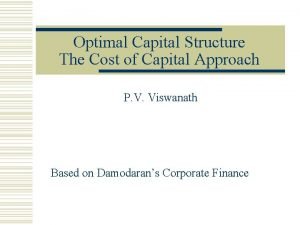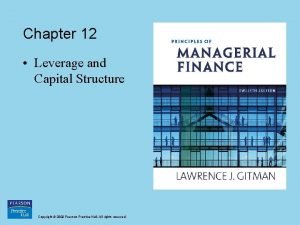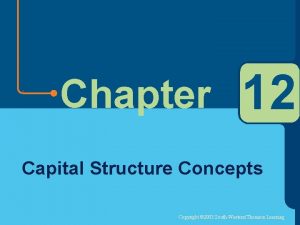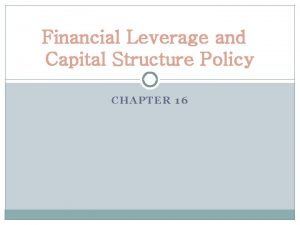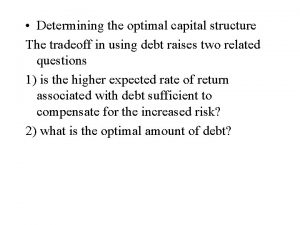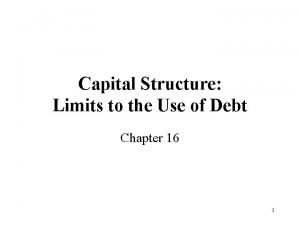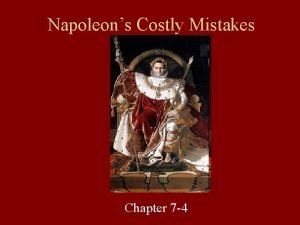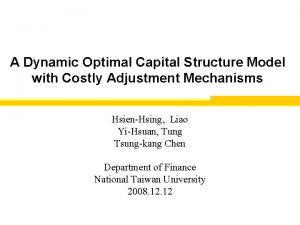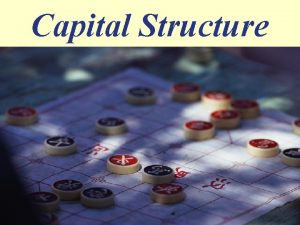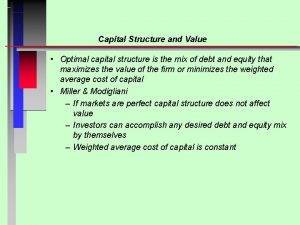A dynamic optimal capital structure model with costly






- Slides: 6

A dynamic optimal capital structure model with costly adjustment mechanisms H. Liao, Y. Tung, T. Chen Discussion by Fei Ding Hong Kong University of Science & Technology Dec. 12, 2008

Overview and contribution n A dynamic capital structure model with fixed and proportional adjustment costs. q Extend Goldstein, Ju, and Leland (2001). q Adjustment costs recapitalization threshold, affects the frequency and magnitude of adjustments. q Consistent with empirical findings of Leary and Roberts (2005).

The model n n Exogenous cash flow process: q Geometric Brownian motion q Constant growth rate and volatility Firm value: discounted expected CF under the riskneutral measure q Constant risk premium & riskfree rate n Tradeoff the tax shield of debt with bankruptcy costs. n Incorporate exogenous fixed & proportional adjustment costs of rebalancing capital structure.

Main results n Due to adjustment costs, firms do not always rebalance when the leverage ratio deviates slightly from the optimal level. q n There exists an optimal leverage range. Larger volatility of CF results in less leverage, less rebalancing but at bigger size. n Higher riskfree rate results in slightly higher leverage, more rebalancing and smaller size. n Lower bankruptcy costs result in higher leverage, more rebalancing at large size. n Fixed costs reduce the frequency and speed of adjustments. Proportional costs reduce the size of adjustments.

Suggestions and Comments n More simulation results with various parameter values. Compare with empirical results and data in practice. q Coupon, bankruptcy level, credit spreads, timeseries of leverage ratios, etc. q Why higher cost when closer to the optimal level? q Alternative cost functions? n Time varying, firm/industry shocks, natural experiments

Suggestions and Comments n Any new insights / empirical implications generated? n Better writing to facilitate understanding.
